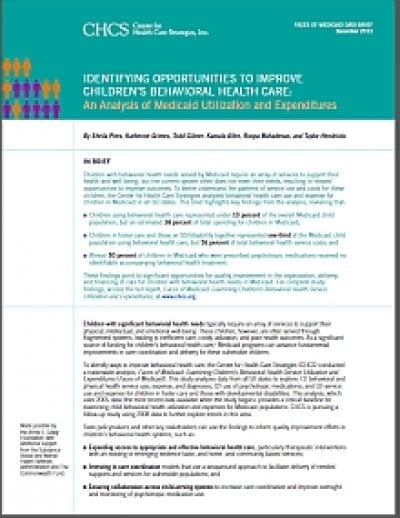
Children with behavioral health needs served by Medicaid require an array of services to support their health and well-being. However, the current system often does not meet their needs, resulting in missed opportunities to improve outcomes. To better understand the patterns of service use and costs for these children, the Center for Health Care Strategies analyzed behavioral health care use and expense for children in Medicaid in all 50 states. This brief highlights key findings from the analysis and points to significant opportunities for quality improvement in the organization, delivery and financing of care for children with behavioral health needs in Medicaid. For complete study findings, access the full report, Faces of Medicaid: Examining Children’s Behavioral Health Service Utilization and Expenditures. For more resources, visit the CHCS website.
By examining patterns of behavioral health care use and expense in their own Medicaid programs, compared to the national baseline presented in this study, states can work toward targeted improvements in behavioral health care access, quality, and cost-effectiveness.
We hope you'll find value in this report. We’d love to get a little information from you, which we'll use to notify you about relevant new resources.